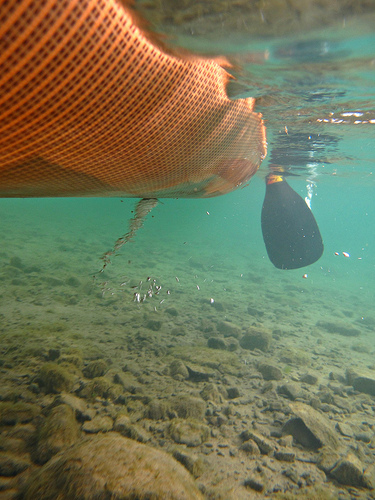![]() We don’t usually learn about the physics of squishy things. Physics textbooks are filled with solid objects such as incompressible blocks, inclined planes and inelastic strings. This is the rigid world that obeys Newton’s laws of motion. Here, squishiness is an exception and drag is routinely ignored. The only elastic object around is a spring, and it is perfectly elastic. It will never bend too far and lose its shape. But any child who has played vigorously with a Slinky has stretched past the limits of this Newtonian world.
We don’t usually learn about the physics of squishy things. Physics textbooks are filled with solid objects such as incompressible blocks, inclined planes and inelastic strings. This is the rigid world that obeys Newton’s laws of motion. Here, squishiness is an exception and drag is routinely ignored. The only elastic object around is a spring, and it is perfectly elastic. It will never bend too far and lose its shape. But any child who has played vigorously with a Slinky has stretched past the limits of this Newtonian world.

Whereas the rigid universe is notable for its strict adherence to a few basic principles, the squishy universe is a different beast altogether.
I was recently out paddling, and noticed that as you move the paddle through water, tiny whirlpools begin to develop along its sides. The whirlpools grow in size, become self-sustaining, and break off and float away. Eventually they die out, as they lose their energy to the fluid around them.
You could also watch the spirals and vortices created by rising smoke. Or notice the strange shapes made by the wind as it sweeps through the clouds. It’s as if fluids have a life of their own, often wondrous and beautiful, and other times surprising and counter-intuitive.

But the motion of fluids is notoriously hard to predict. It’s so difficult that if you can solve the equations of fluid flow, there are people willing to offer you a million dollars. The difficulty comes from a mathematical property of the equations known as non-linearity. Simply put, a non-linear system is one where a small change can lead to a large effect. The same thing that makes these equations difficult to solve is also what makes fluids surprising and interesting. It’s why the weather is so hard to predict – tiny changes in local temperatures and pressures can have a large effect.
At this point, most reasonable people would throw their arms up in despair. But physicists are an unreasonably persistent bunch, and when faced with an equation that they can’t solve, they try to get some insight by looking at what happens at extremes. For example, thick and syrupy fluids like glycerine behave in a surprisingly orderly fashion. Take a look at this video (watch through to the end, it’s worth it).
I bet you’ve never seen a fluid do that before. So what’s going on here? And what does this have to do with swimming sperm?





